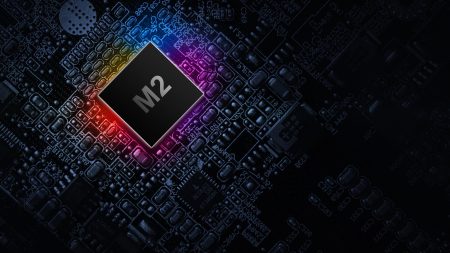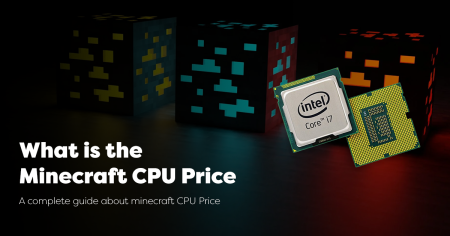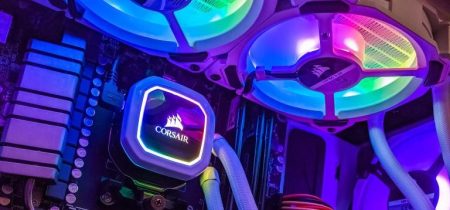The good news is that if you’ve just chosen to put up a build and you’re going to be employing AMD’s famous RX 5700 XT, you’re getting something that gives a variety of options and the amazing experience that comes with it.
We don’t want to deal with performance concerns, which will arise if a GPU is combined with a subpar central processing unit (CPU). Solution? A decent central processing unit should do the trick.
We have researched the top CPUs for the RX 5700 XT, so you don’t have to waste time sifting through the numerous options.
Top Picks
- AMD Ryzen 5 5600X – Best Performance
- Intel Core i7-12700K – Best Overall
- AMD Ryzen 7 3700X CPU – Best Value
- AMD Ryzen 3 3300X – Best Price
1. AMD Ryzen 5 5600X
AMD Ryzen 5 5600X
When combined with the RX 5700 XT, the 5600X will shine since the CPU will be a completely irrelevant bottleneck, allowing the full potential of both components to shine through. This is at the native 1080p resolution for which the RX 5700 XT was designed.
With its six processing cores and twelve threads, the Ryzen 9 5600X can handle demanding applications like video games and light multicore and workstation workloads.
Pros: Cons:The 5600X is suitable for gaming because of its fast core speed of 4.6 GHz. The maximum speed of a CPU’s cores directly affects how well it performs in games. This is because many games still rely on a small number of CPU cores to do all of their tasks.
The Ryzen 5 5600X is a top contender in terms of value for money. We also suggest it since, in terms of value for money, no other CPU currently available comes close.
The 5600X is a member of the AM4 socket standard, which is another reason why we advocate adopting it. With so much AM4 gear currently in circulation, used components are readily available at low prices, and with the recent arrival of AM5, you may even get bargains on AM4 motherboards.
To top it all off, the Ryzen 5 5600X is energy-efficient, requiring just 65W of power—far less than the 250W required by other flagship CPUs.
2. Intel Core i7-12700K Processor
Intel Core i7-12700K Processor
Given Intel’s history, particularly that which began with the 9th generation of CPUs, many of us were both delighted and fearful when the company released its 12th generation of chips. There was an obvious decrease in performance with an increase in costs, energy use, and temperature.
Pros: Cons:However, the advent of the 12th generation cemented Intel’s position as a vital player and assured the company’s survival. If you’re in the market for a high-quality gaming PC that won’t crash unexpectedly, we would recommend checking into the Intel Core i7-12700K. The i5 12600K is likewise excellent, but it’s aimed at the mass market. For superior performance, however, power users might choose the i7 12700K.
The CPU features fast clock speeds for both performance and efficiency cores straight out of the box, and its 12 cores and 20 threads make it ideal for handling heavy multitasking workloads. This CPU creates significant heat, so you shouldn’t even consider using it with a subpar cooler, so make sure you’re using a quality one.
As a whole, Intel’s 12th-generation product range offers tremendous value for the money, with a price-to-performance ratio that easily beats the competition while still being affordable.
3. AMD Ryzen 7 3700X Processor
AMD Ryzen 7 3700X Processor
The AMD Ryzen 7 3700X is an excellent all-around computer processor. The CPU’s eight cores and 16 threads make it a great pick for folks who require a lot of processing power for things like gaming, uploading, and other heavy-duty activities.
Pros: Cons:This CPU has a large cache size of 36 MB, including a 64KB L1 Cache, a 512KB L2 Cache, and a 32MB L3 Cache, providing ample space to store instructions and improve processing speed. It has a basic clock speed of 3.6GHz and can turbo up to 4.4GHz if necessary.
This CPU is compatible with motherboards featuring a socket AM4. It supports PCIe 4.0 and DDR4-3200MHz memories. The included Wraith Prism cooler is a top-tier example of an air cooler, which is a big reason you should consider purchasing this CPU. Its cooling performance is so good that it can prevent an overclocked 3700X from becoming too hot.
This CPU has a 95W thermal design power. You’ll need an excellent aftermarket cooler since the load is too much for a regular air cooler.
4. AMD Ryzen 3 3300X
AMD Ryzen 3 3300X
The Ryzen 3 3300X is the greatest value for money if you’re searching for a low-cost gaming processor with comparable single-thread performance to the Ryzen 3700X when combined with the Radeon RX 5700 or 5700 XT.
Pros: Cons:The single-core performance of the 3300X is almost identical to that of the Ryzen 3700X, which raises the issue of why one would go for the 3700X and spend an extra one hundred dollars on their PC.
Similarly efficient to Ryzen 3700X in terms of power consumption is the Ryzen 3300X, which is built on the Zen 2 architecture. Improved performance is possible with support for boost clock and hyperthreading. Gaming at 1440p rather than 1080p will also lead to better performance.
Since it comes with an effective stock cooler, you may save $40–$60 if you’re building on a tight budget.
Considerations When Purchasing a CPU for RX 5700 XT
When searching for the optimal central processing unit for your Radeon RX 5700 XT graphics card, keep the following in mind:
• Clock Speed
When looking to buy a new central processing unit, one of the most crucial specs to check is its clock speed. In general, the greater the clock speed, the better the performance. The maximum clock speed possible, known as the boost clock, should also be taken into account. The maximum frequency at which a CPU can operate is referred to as its “boost” frequency.
• Cache
To store data that is often accessed, the cache is crucial. When the cache size is increased, the performance also increases. Remember that a bigger cache will also use more energy.
• TDP
The thermal design power (TDP) of a CPU measures how much heat it generates and how much power it consumes. It is important to consider TDP when choosing a CPU for your RX 5700 XT graphics card because a CPU with a high TDP may require a more powerful and potentially louder cooler to keep it running at optimal temperatures.
On the other hand, a CPU with a lower TDP may be more energy efficient and produce less heat, potentially allowing for a quieter cooling solution. Finding the right balance between performance and power consumption is important when selecting a CPU for your system.
• Overclocking and Compatibility
Making sure your CPU is compatible with your motherboard is a must. Also, think about whether or not the CPU has been unlocked for overclocking.
Frequently Asked Questions (FAQS)
1. What is the difference between a processor’s base clock and boost clock?
The base clock refers to the speed at which the processor’s cores operate when they are idle or performing low-intensity tasks. On the other hand, the boost clock refers to the maximum speed at which the processor’s cores can operate when they are under load or performing high-intensity tasks. The boost clock is typically higher than the base clock and is achieved through a feature called “turbo boost.”
2. What is overclocking, and why should you do it?
Overclocking is the process of increasing the computer’s operating speed above its factory-default limitations. The gaming industry often does this to provide better performance and greater frame rates.
Overclocking may improve overall system performance, but it can also negatively impact battery life, heat production, noise levels (due to higher fan speeds), energy consumption, and even stability concerns with key components like RAM or GPU modules.
It’s important to have all the facts before doing any potentially harmful actions, but unfortunately, many individuals learn these lessons the hard way via their experimentation.
3. What is a limiting factor when it comes to the CPU and the GPU?
The term bottleneck is used to describe a situation in which one part is responsible for slowing down the whole.
For example, if your GPU has better requirements and demands more processing power than your CPU can provide, your CPU may become a limiting factor. If your CPU isn’t adequate to the work of keeping up with the demands of both the GPU and the rest of the system, then your graphics card will struggle to handle tasks like gaming or video rendering.
An inefficient system with a bottleneck wastes resources and decreases throughput.
Conclusion
Getting the RX 5700 XT may be nerve-wracking since you will also have to invest in a powerful central processing unit. If you aren’t sure which central processing unit (CPU) is best for your graphics processing unit (GPU), then this roundup will help you make an informed decision.
To help you make an informed decision, we compiled a comprehensive overview of all available solutions across a wide range of pricing points and types of customers.
We believe the Ryzen 5 5600X is one of the most cost-effective processors available. We do not advise straying too far from the 5600X and its efficiency and performance per money. You may choose a less powerful CPU from the Ryzen portfolio. However, doing so will result in a greater bottleneck and poorer overall CPU performance.


















